-
 Bitcoin
Bitcoin $108,165.4587
0.78% -
 Ethereum
Ethereum $2,456.3517
1.15% -
 Tether USDt
Tether USDt $1.0003
0.00% -
 XRP
XRP $2.1934
0.05% -
 BNB
BNB $650.0935
0.52% -
 Solana
Solana $151.3905
2.69% -
 USDC
USDC $0.9998
0.00% -
 TRON
TRON $0.2751
-0.32% -
 Dogecoin
Dogecoin $0.1640
0.87% -
 Cardano
Cardano $0.5631
0.57% -
 Hyperliquid
Hyperliquid $38.7115
4.69% -
 Bitcoin Cash
Bitcoin Cash $493.1868
-0.39% -
 Sui
Sui $2.8217
3.61% -
 Chainlink
Chainlink $13.3994
2.08% -
 UNUS SED LEO
UNUS SED LEO $9.1632
0.94% -
 Avalanche
Avalanche $18.0318
1.97% -
 Stellar
Stellar $0.2388
0.35% -
 Toncoin
Toncoin $2.8763
1.41% -
 Shiba Inu
Shiba Inu $0.0...01160
1.59% -
 Litecoin
Litecoin $86.6393
1.29% -
 Hedera
Hedera $0.1485
0.16% -
 Monero
Monero $315.7948
1.56% -
 Polkadot
Polkadot $3.4240
1.88% -
 Bitget Token
Bitget Token $4.6314
-0.44% -
 Dai
Dai $0.9998
-0.01% -
 Ethena USDe
Ethena USDe $1.0002
-0.01% -
 Uniswap
Uniswap $7.2110
2.59% -
 Aave
Aave $270.6087
6.07% -
 Pi
Pi $0.5350
0.52% -
 Pepe
Pepe $0.0...09545
1.26%
What is the volume requirement for the right shoulder of the head and shoulders bottom pattern?
The head and shoulders bottom pattern in crypto trading signals a potential downtrend reversal, confirmed by rising volume during the right shoulder's ascent toward the neckline.
Jun 29, 2025 at 10:56 am
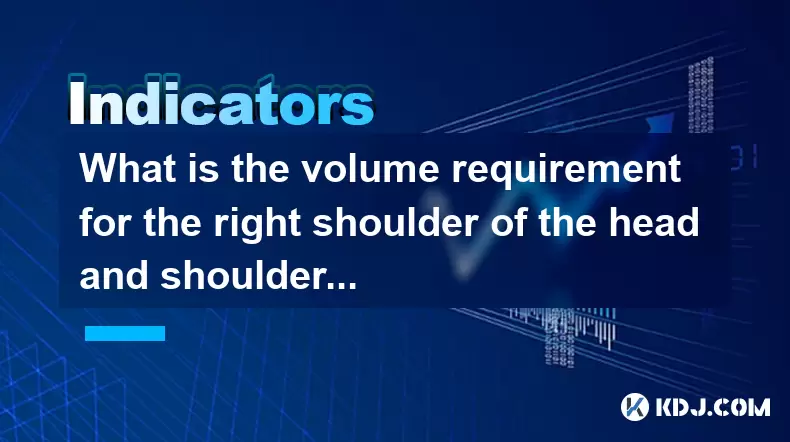
Understanding the Head and Shoulders Bottom Pattern in Cryptocurrency Trading
The head and shoulders bottom pattern, also known as the inverted head and shoulders, is a reversal chart pattern commonly observed in cryptocurrency price charts. It signals a potential shift from a downtrend to an uptrend. This pattern consists of three distinct lows: the left shoulder, the head (the lowest point), and the right shoulder (which should align closely in height with the left shoulder). The pattern completes when the price breaks above the neckline, which is drawn between the two peaks that separate the shoulders and the head.
While traders often focus on the symmetry of the shoulders and the depth of the head, one critical component that's frequently overlooked or misunderstood is the volume requirement for the right shoulder. Understanding this aspect can significantly improve the accuracy of trade setups based on this pattern.
The Role of Volume in Chart Patterns
In technical analysis, volume serves as a confirmation tool. When used in conjunction with price patterns like the head and shoulders bottom, it adds a layer of validation to potential trend reversals. Typically, during the formation of the pattern:
- The left shoulder forms on moderate volume.
- The head develops on lower volume, indicating weakening selling pressure.
- The right shoulder, however, must exhibit increasing volume on its upward move toward the neckline to confirm strengthening buyer interest.
This increase in volume during the right shoulder suggests that bulls are gaining control and that a breakout may be imminent. If volume remains flat or declines during this phase, the pattern may lack conviction and could fail.
Volume Requirements for the Right Shoulder Explained
The right shoulder’s volume plays a crucial role in confirming the validity of the head and shoulders bottom pattern. Specifically:
- During the rise from the right shoulder toward the neckline, volume should progressively increase compared to the corresponding movement in the left shoulder.
- Ideally, the volume during the right shoulder rally should exceed the average trading volume seen during the prior two rallies (left shoulder and head).
- A surge in volume as the price approaches or crosses the neckline further strengthens the likelihood of a successful breakout.
This rising volume indicates growing participation from buyers and provides confidence that the downtrend is indeed ending. Traders who ignore this volume signal risk entering trades without sufficient confirmation.
How to Measure and Compare Volume Across Shoulders
To accurately assess whether the volume on the right shoulder meets the required criteria, follow these steps:
- Identify the exact candlesticks or bars that form each part of the pattern — left shoulder, head, and right shoulder.
- Look at the volume bars or histograms beneath your price chart for those specific periods.
- Compare the volume during the upward movement after the head and after the right shoulder:
- Use moving averages of volume (e.g., 20-period volume MA) to determine what level is considered "above average."
- Overlay volume indicators like On-Balance Volume (OBV) or Volume Oscillator to spot divergences or confirmations.
- Ensure that the volume spike occurs not just randomly but specifically during the ascent from the right shoulder toward the neckline.
If volume increases meaningfully during this final push, it reinforces the idea that institutional or smart money is stepping in, which often precedes a strong rally.
Common Mistakes in Interpreting Volume on the Right Shoulder
Many novice traders misinterpret or overlook the importance of volume on the right shoulder due to several common errors:
- Focusing only on price structure while ignoring volume dynamics.
- Expecting identical volume levels across all parts of the pattern instead of looking for progressive improvement in volume during the right shoulder phase.
- Confusing volume spikes during pullbacks or consolidations within the right shoulder as valid confirmation, rather than during the actual rally toward the neckline.
- Using incorrect timeframes — for instance, analyzing daily volume on a 1-hour chart — leading to inaccurate conclusions.
Avoiding these pitfalls requires discipline and attention to detail. Properly identifying volume behavior helps filter out false breakouts and enhances trade reliability.
Practical Steps to Confirm the Right Shoulder Volume
To apply this knowledge practically, follow this checklist:
- Mark the beginning and end of the right shoulder formation clearly on your chart.
- Observe the volume during the price rebound from the right shoulder low.
- Compare this volume with that of the left shoulder rebound and the rebound from the head.
- Watch for volume expansion as the price nears the neckline.
- Wait for a breakout above the neckline with increased volume, ideally on a closing basis.
Using tools such as volume profile, candlestick filters, or even custom scripts in platforms like TradingView can help automate some of this analysis.
Frequently Asked Questions
Q: Does the right shoulder have to be symmetrical to the left shoulder in a head and shoulders bottom pattern?
A: No, perfect symmetry is not required. However, similar height and structure improve the pattern’s reliability. What matters more is the volume behavior during the right shoulder’s recovery.
Q: Can the head and shoulders bottom pattern still work if the right shoulder’s volume doesn’t increase?
A: It may still play out, but the probability of a successful breakout decreases. Low or declining volume during the right shoulder reduces confidence in the pattern’s effectiveness.
Q: How long should I wait for a breakout after the right shoulder forms?
A: There's no fixed timeframe, but most valid breakouts occur within a few candles after the right shoulder completes. Monitor volume and momentum indicators to avoid waiting too long.
Q: Are there any specific cryptocurrencies where the head and shoulders bottom pattern works better?
A: The pattern applies across assets, including crypto, forex, and stocks. However, higher liquidity coins like Bitcoin and Ethereum tend to produce clearer patterns due to more consistent volume data.
Disclaimer:info@kdj.com
The information provided is not trading advice. kdj.com does not assume any responsibility for any investments made based on the information provided in this article. Cryptocurrencies are highly volatile and it is highly recommended that you invest with caution after thorough research!
If you believe that the content used on this website infringes your copyright, please contact us immediately (info@kdj.com) and we will delete it promptly.
- Bitcoin: A Lifeline Against Authoritarian Regimes and a Strategic Asset?
- 2025-06-29 22:30:12
- Elementary, My Dear Collector: Sherlock Holmes 50p Coins on eBay!
- 2025-06-29 22:30:12
- New Coin Disappearing Fast: The Price Impact of Angry Pepe Fork
- 2025-06-29 22:35:12
- Tron vs. Dogecoin: A Cryptocurrency Showdown in 2025
- 2025-06-29 22:50:12
- Ethereum, DeFi, and Cryptocurrency: Navigating the Evolving Landscape
- 2025-06-29 23:07:14
- Bitcoin Acquisition Strategy: From Saylor's Playbook to London's Crypto Craze
- 2025-06-29 23:30:12
Related knowledge
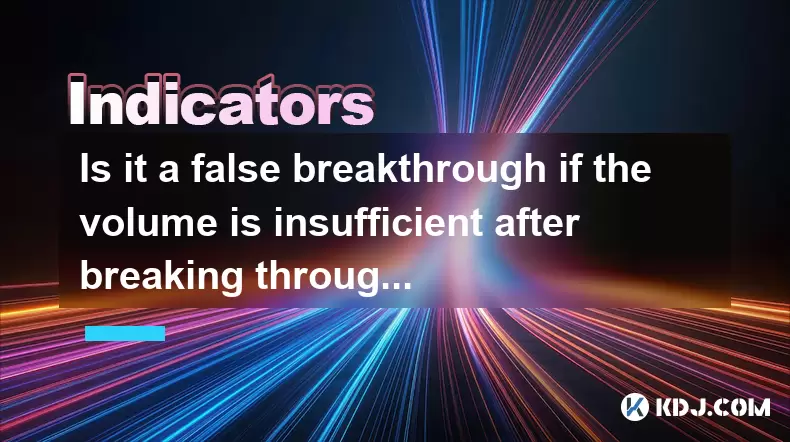
Is it a false breakthrough if the volume is insufficient after breaking through the previous high?
Jun 30,2025 at 12:07am
Understanding Breakthroughs in Cryptocurrency TradingIn the world of cryptocurrency trading, a breakthrough refers to a situation where the price of an asset moves beyond a previously established resistance level. This event often signals potential momentum and may indicate a continuation of an upward trend. However, not all breakthroughs are created eq...
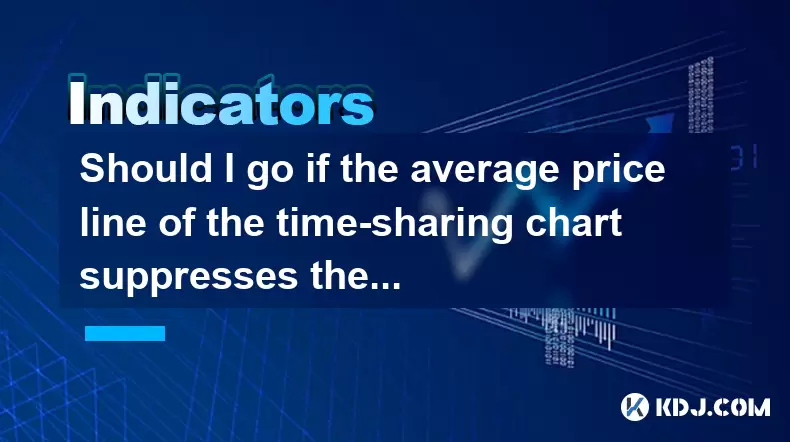
Should I go if the average price line of the time-sharing chart suppresses the rebound?
Jun 28,2025 at 05:14pm
Understanding the Time-Sharing Chart and Average Price LineThe time-sharing chart is a real-time chart used in cryptocurrency trading to visualize price movements over short intervals, typically within a single trading day. It provides traders with insights into intraday volatility and momentum. The average price line, often calculated as a moving avera...
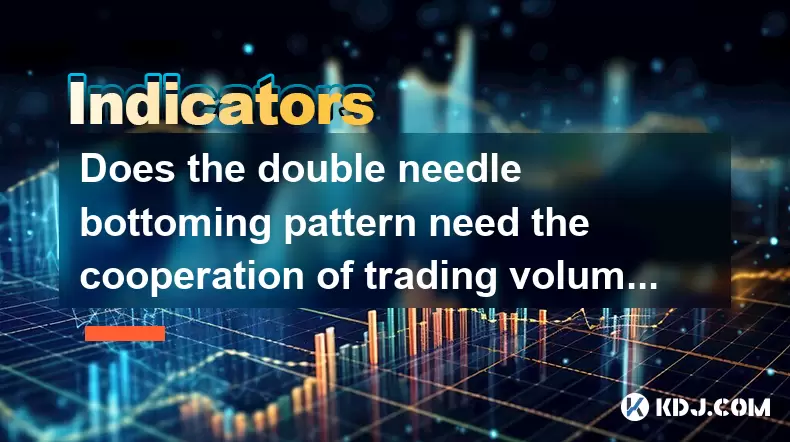
Does the double needle bottoming pattern need the cooperation of trading volume?
Jun 29,2025 at 06:29pm
Understanding the Double Needle Bottoming PatternThe double needle bottoming pattern is a significant technical analysis formation often observed in cryptocurrency charts. It typically appears after a downtrend and signals a potential reversal to an uptrend. Visually, it consists of two consecutive candlesticks with long lower shadows and small real bod...
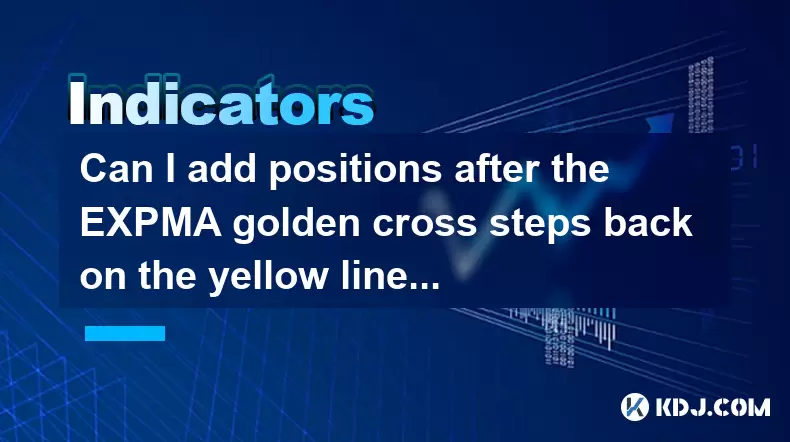
Can I add positions after the EXPMA golden cross steps back on the yellow line?
Jun 28,2025 at 11:57am
Understanding the EXPMA Indicator and Its RelevanceThe EXPMA (Exponential Moving Average) is a technical analysis tool used by traders to identify trends and potential entry or exit points in financial markets, including cryptocurrency trading. Unlike simple moving averages, EXPMA gives more weight to recent price data, making it more responsive to new ...

How to operate the next day after the daily limit is released with huge volume?
Jun 28,2025 at 12:35pm
Understanding the Daily Limit and Its ReleaseIn cryptocurrency trading, daily limits are often set by exchanges to manage volatility or during periods of high market activity. These limits can restrict how much an asset's price can fluctuate within a 24-hour period. When the daily limit is released, it typically means that the price cap has been lifted,...
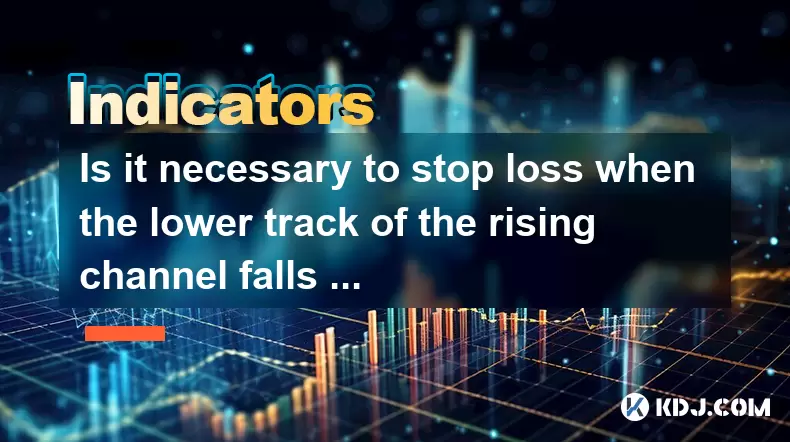
Is it necessary to stop loss when the lower track of the rising channel falls below?
Jun 28,2025 at 05:29pm
Understanding the Rising Channel PatternThe rising channel pattern is a popular technical analysis tool used by traders to identify potential upward trends in asset prices. It consists of two parallel lines: an upper resistance line and a lower support line, both sloping upwards. The price action typically oscillates between these boundaries, offering o...

Is it a false breakthrough if the volume is insufficient after breaking through the previous high?
Jun 30,2025 at 12:07am
Understanding Breakthroughs in Cryptocurrency TradingIn the world of cryptocurrency trading, a breakthrough refers to a situation where the price of an asset moves beyond a previously established resistance level. This event often signals potential momentum and may indicate a continuation of an upward trend. However, not all breakthroughs are created eq...

Should I go if the average price line of the time-sharing chart suppresses the rebound?
Jun 28,2025 at 05:14pm
Understanding the Time-Sharing Chart and Average Price LineThe time-sharing chart is a real-time chart used in cryptocurrency trading to visualize price movements over short intervals, typically within a single trading day. It provides traders with insights into intraday volatility and momentum. The average price line, often calculated as a moving avera...

Does the double needle bottoming pattern need the cooperation of trading volume?
Jun 29,2025 at 06:29pm
Understanding the Double Needle Bottoming PatternThe double needle bottoming pattern is a significant technical analysis formation often observed in cryptocurrency charts. It typically appears after a downtrend and signals a potential reversal to an uptrend. Visually, it consists of two consecutive candlesticks with long lower shadows and small real bod...

Can I add positions after the EXPMA golden cross steps back on the yellow line?
Jun 28,2025 at 11:57am
Understanding the EXPMA Indicator and Its RelevanceThe EXPMA (Exponential Moving Average) is a technical analysis tool used by traders to identify trends and potential entry or exit points in financial markets, including cryptocurrency trading. Unlike simple moving averages, EXPMA gives more weight to recent price data, making it more responsive to new ...

How to operate the next day after the daily limit is released with huge volume?
Jun 28,2025 at 12:35pm
Understanding the Daily Limit and Its ReleaseIn cryptocurrency trading, daily limits are often set by exchanges to manage volatility or during periods of high market activity. These limits can restrict how much an asset's price can fluctuate within a 24-hour period. When the daily limit is released, it typically means that the price cap has been lifted,...

Is it necessary to stop loss when the lower track of the rising channel falls below?
Jun 28,2025 at 05:29pm
Understanding the Rising Channel PatternThe rising channel pattern is a popular technical analysis tool used by traders to identify potential upward trends in asset prices. It consists of two parallel lines: an upper resistance line and a lower support line, both sloping upwards. The price action typically oscillates between these boundaries, offering o...
See all articles

























































































